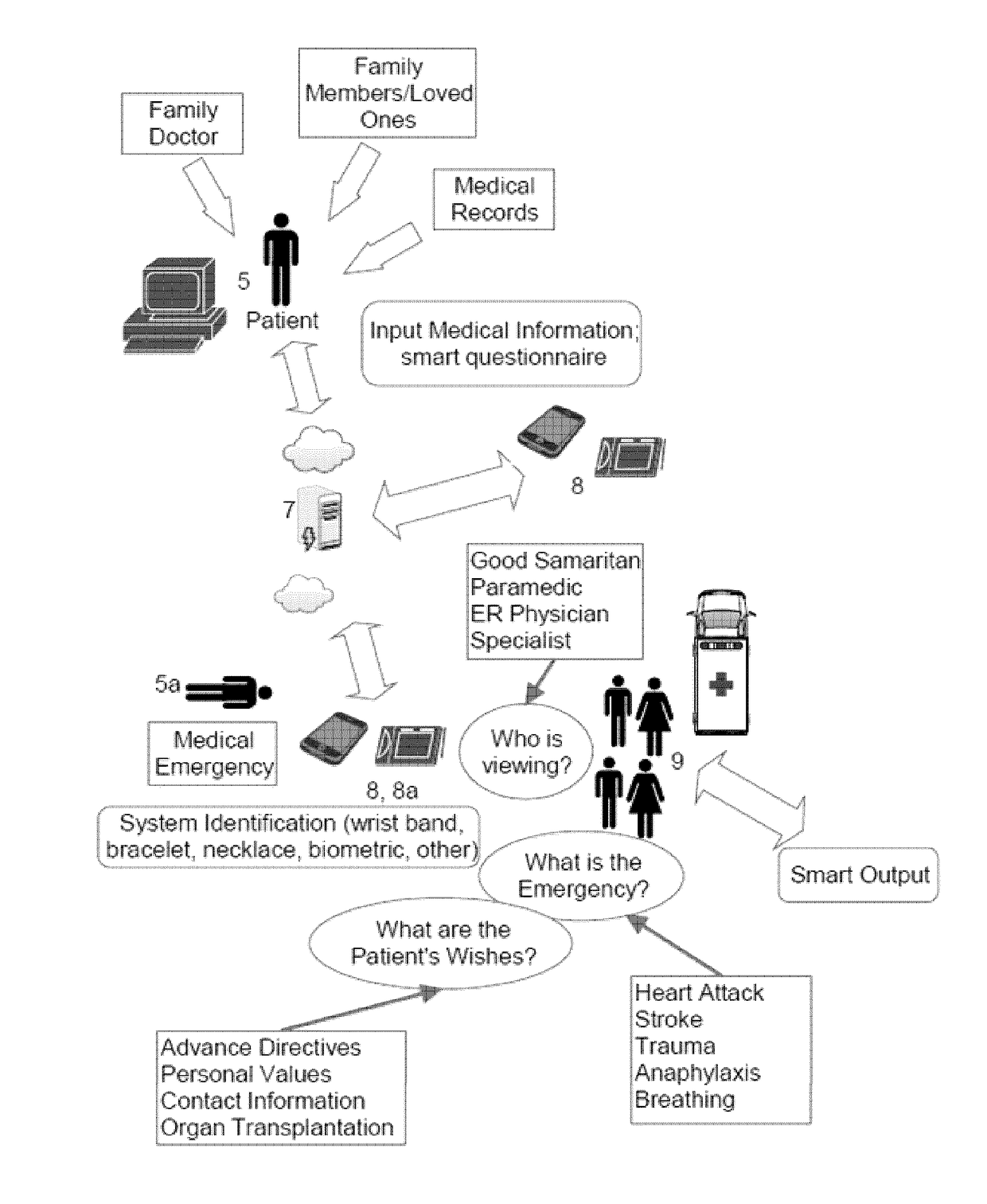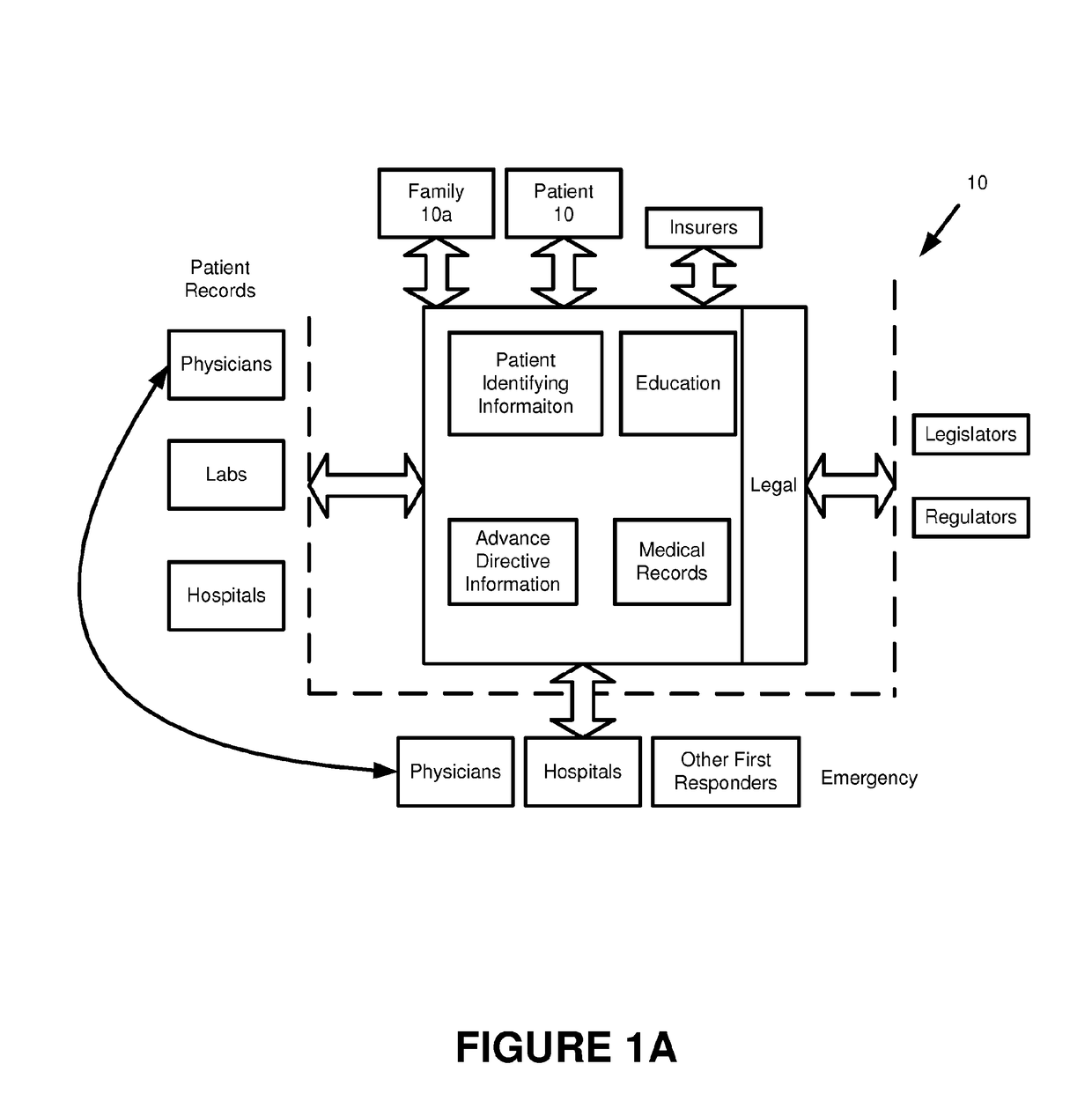Systems and methods for obtaining and displaying medical data to assist decision making during a medical emergency
a medical emergency and medical data technology, applied in the field of systems and methods for obtaining and displaying medical data to assist decision making during a medical emergency, can solve the problems of medical emergencies such as motor vehicle accidents, drownings, falls, etc., and the time delay between occurrence and treatment can affect the outcome of trauma medical emergencies such as motor vehicle accidents, drownings, falls, etc., and can be difficult to obtain consent. a variable and often complex procedure, otherwise die or have a poor outcom
- Summary
- Abstract
- Description
- Claims
- Application Information
AI Technical Summary
Benefits of technology
Problems solved by technology
Method used
Image
Examples
Embodiment Construction
[0109]With reference to the figures, systems and methods for obtaining, maintaining, organizing and accessing medical information about a patient is provided. More specifically systems and methods for gathering and presenting medically important and time-sensitive medical information that is relevant to a general class of medical emergency are described. In a broad sense, the systems and methods gather and present information so as to provide a platform that can be used improve the efficiency and timeliness of medical decisions in accordance with a patient's wishes. In addition, and more specifically, systems and methods of providing pre-consent for medical practitioners to conduct medical treatment as well as systems and methods providing ready access to a patient's advance directives are described. In addition, systems and methods of ranking medical information that may be relevant to an emergency situation are described. In its various embodiments, the systems and methods describ...
PUM
 Login to View More
Login to View More Abstract
Description
Claims
Application Information
 Login to View More
Login to View More - R&D
- Intellectual Property
- Life Sciences
- Materials
- Tech Scout
- Unparalleled Data Quality
- Higher Quality Content
- 60% Fewer Hallucinations
Browse by: Latest US Patents, China's latest patents, Technical Efficacy Thesaurus, Application Domain, Technology Topic, Popular Technical Reports.
© 2025 PatSnap. All rights reserved.Legal|Privacy policy|Modern Slavery Act Transparency Statement|Sitemap|About US| Contact US: help@patsnap.com



